In this article
Setting out on the waters of Cabo San Lucas is more than just a fishing trip; it’s stepping into a legendary arena for sport fishing. Here, where the Pacific Ocean embraces the Sea of Cortez, an incredibly rich marine world thrives, drawing anglers from across the globe for fishing in Los Cabos San Lucas. We’ll navigate the currents of choosing the right season and charter, understanding the local rules of the water, landing the fishing techniques for prized catches like Marlin and Tuna, and pinpointing the fishing spots where giants roam.
This guide is your chart for a successful 2025 fishing adventure in Cabo San Lucas, Mexico, whether you’re a seasoned angler chasing a trophy or a family looking to cast lines into an unforgettable adventure. We know the questions that arise when planning such a trip – from costs to comfort on the waves. Let’s cast off and explore everything you need to know to make your Cabo fishing dreams a reality.
Cabo’s Fishing Allure

Cabo San Lucas isn’t just a destination; it’s a siren call for anglers worldwide. Its reputation is built on a unique geographical advantage – the meeting point of two vast, distinct bodies of water. This confluence creates nutrient-rich currents, a veritable buffet that sustains an astonishing variety and abundance of game fish, solidifying its place on the global sport fishing map. The sport fishing Los Cabos scene is truly world-class.
Why Fish Cabo?
The magic of Cabo fishing stems from where the deep blue Pacific meets the fertile Sea of Cortez. This natural intersection creates powerful currents and upwellings, fostering an ecosystem teeming with baitfish and the predators that hunt them. It’s no surprise this area became synonymous with sportfishing as tourism began its flow in the 1960s.
Known globally as the “Marlin Capital of the World,” Cabo attracts those seeking the thrill of marlin fishing, battling Striped, Blue, and Black Marlin. Yet, the bounty extends far beyond billfish. Anglers find exceptional opportunities for powerful Yellowfin Tuna, dazzling Dorado (Mahi-Mahi), lightning-fast Wahoo, and the formidable inshore fighter, the Roosterfish. This diversity ensures exciting fishing possibilities throughout the year.
Adding to the appeal is the dramatic backdrop: stark desert landscapes plunging into turquoise waters. Imagine the pull of a big game fish against such breathtaking scenery – it’s an experience unique to Cabo. This blend of world-class angling and stunning environment is a powerful lure for visitors seeking an exhilarating Cabo fishing experience.
Planning your fishing adventure involves navigating choices: the best season for your target, the right fishing charter, local rules, and effective fishing techniques. This guide charts those waters, offering comprehensive, current information for your 2025 trip to Los Cabos, whether you’re an experienced hand or casting for family memories. The foundation remains Cabo’s incredible biodiversity, a gift of its unique location.
Understanding local regulations is key. Accessing official resources ensures smooth sailing. For instance, the Baja California Sur government provides online portals for purchasing licenses. You can find details and acquire necessary permits directly through the [Baja California Sur Sportfishing Licenses & Information website]. Using these official channels is the best way to ensure compliance before you head out on your fishing charter boats.
The significance of sportfishing here isn’t just recreational; it’s deeply woven into the local economy. Angler expenditures create substantial revenue and jobs. This reliance highlights the need for sustainable practices, supported by license fees and responsible charter operations, ensuring these waters remain productive for generations. Organizations like The Billfish Foundation track the economic impact of this vital industry.
Cabo Fishing Calendar
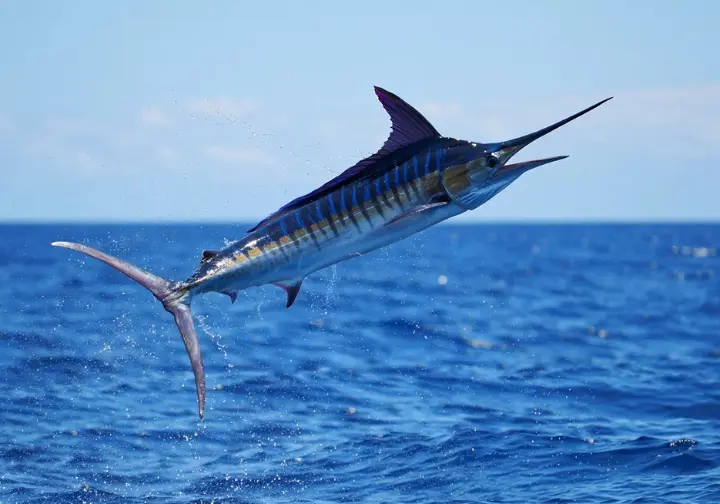
While Cabo’s waters offer action throughout the year, understanding the seasonal ebb and flow is like reading the currents – it guides you to the best spots. Key fish species have peak times, largely influenced by water temperature shifts. Knowing these patterns helps you time your trip perfectly to target specific trophies like Marlin, Tuna, or Dorado. Many species can be fished year round.
Peak Fishing Seasons
Timing is everything in fishing. While Cabo is a year-round fishery, certain months bring specific species to their peak activity. Water temperature is the main conductor, with warmer spring and summer waters drawing pelagic species closer, while cooler winter currents concentrate others. Targeting these peaks dramatically increases your odds for successful angler fishing.
Many consider the fall months, especially September and October, the absolute pinnacle for overall sportfishing action, coinciding with major tournaments. This period boasts peak numbers of large Blue Marlin, Black Marlin, hefty Yellowfin Tuna (including potential giants or “cows”), and fantastic Dorado fishing. Sailfish also hit their stride during this time.
Winter (December-March) shifts the focus primarily to Striped Marlin, which become abundant and active closer to shore. It’s also the prime time for battling powerful Yellowtail Amberjack, particularly in February and March. While Yellowfin Tuna might not be at their fall peak, they remain a very viable target fish.
Spring (April-May) serves as a transition, offering excellent variety and often fantastic fishing with potentially fewer crowds than peak seasons. Striped Marlin remain strong contenders, Dorado numbers surge, and the exciting inshore fishing season for Roosterfish kicks off. May, specifically, is noted for great Striped Marlin and improving Dorado action.
Summer (June-August) signals the arrival and peak season for the heavyweights: large Blue and Black Marlin. Excellent Striped Marlin fishing continues alongside them. Dorado and Wahoo action is typically outstanding, and Yellowfin Tuna remain a solid bet. June also marks the peak for inshore Roosterfish battles. This is prime time for big game fishing.
Knowing these seasonal currents allows you to align your trip dates with the highest probability of encountering your desired catch. Detailed fishing calendars provide month-by-month insights into species availability. Consulting these charts is a vital step before booking your passage. Official bodies like CONAPESCA (National Aquaculture and Fishing Commission – Federal) manage fisheries, and their work often reflects these seasonal abundances.
Month-by-Month Targets
- January/February: Set your sights on Striped Marlin, typically peaking now. Yellowtail Amberjack fishing is also excellent, especially in February. Yellowfin Tuna and Wahoo offer good mixed-bag potential.
- March/April: March often marks the peak for Yellowtail Amberjack, and Swordfish chances improve. April keeps Striped Marlin action good, sees Dorado appearing consistently, and kicks off the Roosterfish season nearshore. Bottom fishing also picks up.
- May/June: May delivers prime Striped Marlin and improving Dorado fishing, while the Roosterfish bite gets serious. June intensifies everything: excellent Striped Marlin, increasing Blue Marlin, peak Roosterfish, and superb Dorado. Book early as vacation season starts.
- July/August: This is big game prime time. Blue Marlin, Black Marlin, Dorado, Wahoo, and Yellowfin Tuna (including giants) are all rated excellent. Striped Marlin are still around, and Roosterfish remain hot inshore. Major tournaments heat up the San Lucas scene.
- September/October: Arguably the best overall fishing months, especially October, home to legendary tournaments. Expect peak chances for large Blue Marlin, Black Marlin, Yellowfin Tuna, Dorado, and Sailfish. Keep an eye on potential tropical storms in September.
- November/December: Fantastic fishing continues. November often yields excellent Yellowfin Tuna, plus good shots at Striped Marlin, Dorado, Wahoo, and Sailfish (hosting the Tuna Jackpot). December offers great weather and strong mixed-bag fishing, mainly targeting Striped Marlin, Tuna, Dorado, and Wahoo.
Complementing calendars with real-time data is smart. Checking recent fishing reports close to your trip provides valuable, up-to-the-minute intelligence on what’s biting and where. Look for weekly Cabo reports.
Meet Cabo’s Star Species
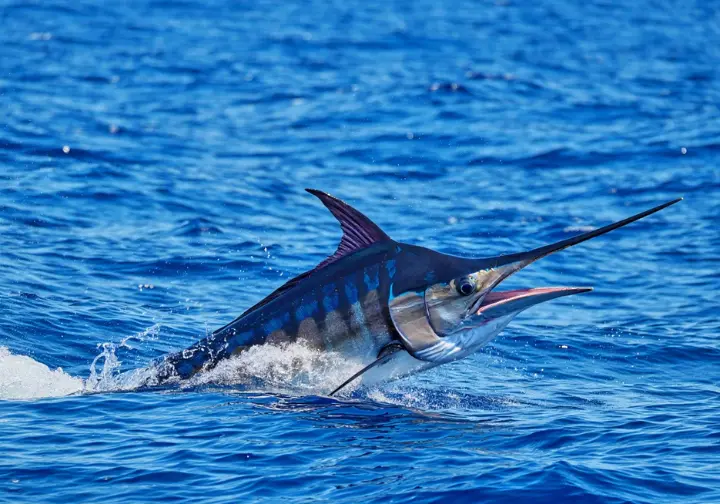
The waters off Cabo San Lucas are home to an impressive cast of characters, each offering a unique challenge and thrill for game fishing. From the acrobatic Marlin that gave the region its nickname to the powerful Tuna and vibrant Dorado, understanding these key players is essential before you make your first cast. Let’s meet the stars of the Cabo fishing show.
Iconic Billfish Targets
Striped Marlin are the quintessential Cabo prize, famed for their aerial displays and flashing colors. Present year-round, they peak from late fall through spring (Nov-June), often closer to shore. Catch-and-release is standard, using circle hooks with live bait for healthy releases. Their abundance makes the Cabo marlin fishing season a major draw for world-class marlin fishing.
Blue Marlin, larger and immensely powerful, arrive with warmer summer/fall waters (peaking July-Oct). While average sizes are impressive (250-350 lbs), Cabo holds the potential for true “granders.” Trolling larger lures or baits further offshore is the typical tactic.
Black Marlin share a similar peak season (July-Oct) and are revered for brute strength, potentially exceeding Blue Marlin in size. Hooking one is a pinnacle achievement in sport fishing. Offshore trolling with large offerings is the primary method.
Sailfish, with their distinctive dorsal fin, peak in the fall (Sept-Nov) and offer incredible speed and jumps. Smaller baits and lures work well when trolling. Conservation groups like The Billfish Foundation actively track populations and promote sustainable angling for these prized fish.
Swordfish are a rarer but highly prized deep-water catch, most likely encountered in March and April. Specialized deep-dropping techniques near underwater canyons like the Santa Maria Canyon are needed. Landing one requires specific effort and knowledge.
Mexican regulations reserve billfish species exclusively for sportfishing within 50 nautical miles, highlighting their recreational importance. Bag limits are strict: one billfish counts as five fish towards the daily limit.
Tuna, Dorado, Wahoo Action
Yellowfin Tuna are a Cabo mainstay, available most of the year with peaks in winter (Jan-Mar) and summer/fall (July-Nov, peaking Sep-Nov). Sizes range from “footballs” to massive “cows” over 200 lbs, often schooling with dolphins. Trolling, drifting live bait, jigging, and kite fishing are all productive methods for catching yellowfin.
Dorado (Mahi-Mahi) are celebrated for brilliant colors, acrobatic fights, and delicious fillets. They peak in warmer months (June-Nov), often found near floating debris or weed lines. Trolling lures or casting live bait works well; keeping the first hooked fish in the water often attracts the school.
Wahoo, known for blistering speed and razor teeth, are most abundant from July through October/November. Their velocity demands high-speed trolling with specialized lures. They are sometimes caught while targeting other offshore species. What’s your dream Cabo catch? A monster fish perhaps?
Recent reports confirm consistent action for these species, often naming specific banks where the bite is hot. Following these reports gives timely clues. Dorado have a specific bag limit: two per person per day, counting as five towards the overall daily limit. Understanding these rules is vital.
Locating Yellowfin Tuna often involves finding dolphin schools, a tactic experienced crews use alongside electronics and sea condition analysis.
Inshore Fishing Favorites
Roosterfish reign supreme in Cabo’s inshore realm, instantly known by their unique dorsal fin. Endemic to the Eastern Pacific, these exotic roosterfish offer thrilling battles on lighter tackle, peaking May-August. Slow-trolling live bait, casting poppers, or even fly fishing Baja Mexico style near beaches works well for the rooster fish. This is world class inshore fishing.
Yellowtail Amberjack, powerful members of the jack family, peak in cooler months (Feb-May). They are targeted by trolling, vertical jigging (“yo-yo” style), or live bait near structure. Their strength provides a real test for any angler.
Various Grouper and Snapper species inhabit reefs, offering excellent bottom fishing, especially spring through fall. Dropping bait or jigs is the standard approach for these bottom-dwelling fish. They are prized table fare, providing delicious fresh fish.
Sierra Mackerel are abundant in winter/spring, known for aggressive surface feeding often signaled by diving birds. Trolling or casting small lures nearshore is effective; wire leaders are wise due to sharp teeth. Bait availability heavily influences success.
Jack Crevalle (“Toros”) are common, powerful fighters, most prevalent in spring/summer. They aggressively hit lures, poppers, and flies cast near shorelines. Their tenacity makes them fun on appropriate tackle.
Roosterfish share the same special bag limit as Dorado: two per person per day, counting as five towards the total daily limit, and are reserved for sportfishing. A key point: shore fishing for species like Roosters, Jacks, and Sierra doesn’t require a fishing license in Mexico.
Choosing Cabo Fishing Charters
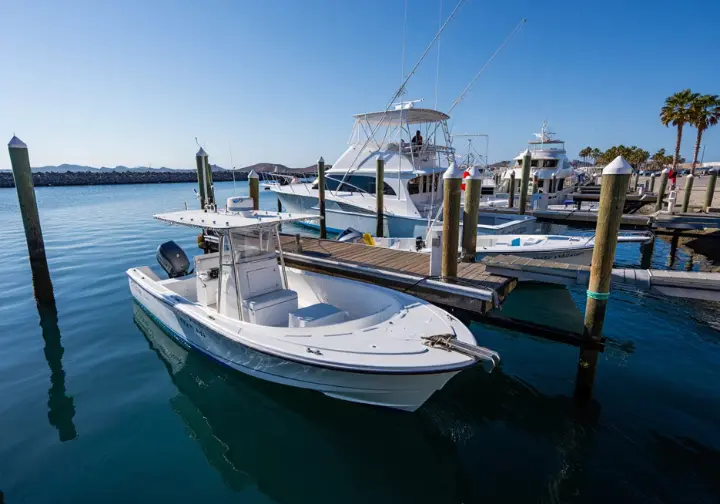
Selecting the right fishing vessel and crew is like choosing the perfect lure – it significantly impacts your success and enjoyment. Cabo offers a wide spectrum of charter options, from traditional pangas to luxurious yachts. Understanding the types of fishing boats, how to find reputable operators, and deciphering costs are crucial steps in planning your trip. Finding good charter fishing deals requires research.
Types of Charter Boats
Pangas offer a traditional, budget-friendly experience, ideal for shorter trips or focusing on inshore species. Cruisers and Sportfishers are the workhorses among fishing vessels, providing a balance of comfort and capability for offshore big game fishing pursuits. Luxury Yachts (Cabo yachts) deliver top-tier amenities and service for those seeking a premium adventure. Comparing options on platforms like FishingBooker can help match your needs and budget. Remember that salt water fishing charters vary greatly by region and boat type.

Finding Reputable Operators
Casting a wide net during your research pays off. Check online reviews on TripAdvisor, Google, and FishingBooker for firsthand accounts of Cabo fishing charters. Word-of-mouth referrals from fellow anglers or forums like BD Outdoors can also yield gems. We’ve seen anglers thrilled with local fishing crews recommended by friends.
Visit the charter company’s official website. Look for details on their fleet, crew experience (longevity is often a good sign), services, and conservation commitment. The quality of the captains and crew is paramount – their local knowledge is your best guide to finding fish and ensuring safety. Consider established names like Lucas Picante Sportfishing or Lands End Charters.
Well-regarded fleets include names like Pisces Sportfishing, Lands End Charters, Cabo Sportfishing Crew, Cabo Magic, RedRum/Mar Vida, JC’s Sportfishing, Picante, and Gordo Banks Pangas. Researching these operators is a solid start for your Cabo sportfishing plans. Booking directly might save costs, but platforms offer comparison tools. Organizations like The Billfish Foundation sometimes recognize operators committed to conservation. Check for a local Cabo office for direct inquiries.
Understanding Charter Costs
Charter pricing can seem like murky water. Costs vary based on boat size, trip duration (half-day vs. full-day), and inclusions. Always verify what “All-Inclusive” truly means for an all-inclusive fishing trip. Common exclusions are fishing licenses, live bait ($20-$40+), fish cleaning ($10-$30+), and the crucial crew gratuity (tip).
Crew gratuity (15-20% of charter cost) is customary and vital for the crew’s income; it’s almost never included in the advertised price. Budget for this separately. We once had a group caught by surprise, assuming the tip was included – it soured an otherwise great day fishing. Don’t make that mistake!
Items often included (especially on higher-end charters) might be licenses, bait, basic food/drinks, fuel, and taxes. Always get a detailed breakdown in writing. A cheaper base price might become more expensive once extras are factored in. Compare the total expected cost, not just the advertised rate.
Cabo Fishing Regulations Guide
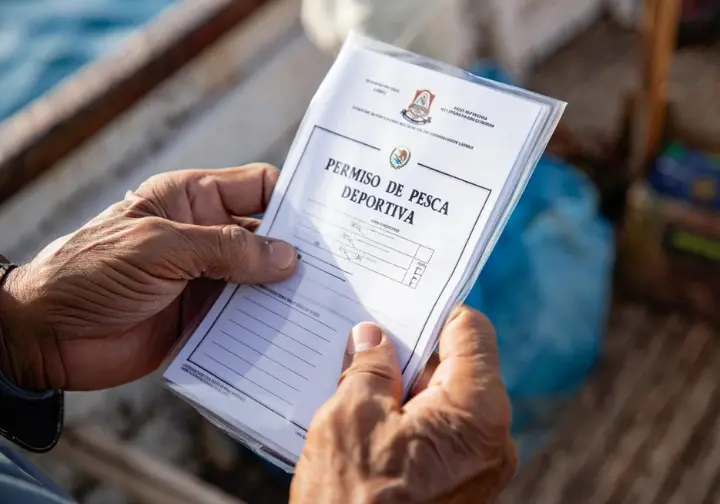
Navigating the local fishing regulations is as important as navigating the waters themselves. Understanding Mexican license requirements, bag limits, and fish species-specific rules ensures a smooth, legal, and responsible fishing adventure. Compliance protects the fishery and prevents unwanted complications during your trip in Los Cabos.
Mandatory Fishing Licenses
Here’s a critical point: every single person aboard a boat actively fishing or carrying fishing gear needs a valid Mexican sport fishing license. This applies regardless of age or whether they plan to fish. It’s a strict rule, different from many places, and enforcement is active. Don’t get snagged assuming only the person holding the rod needs one.
Licenses are not required for fishing from shore (beaches, rocks, piers). This offers an accessible fishing option without a permit.
The easiest way to get licensed is online via the official Baja California Sur government portal. You can pay by credit card and print your license immediately through their Baja California Sur Sportfishing License Purchase System. Many charters handle licenses, but always confirm if they are included, especially with basic or panga charters where it’s often extra.
Licenses can also be bought in person at the marina, FONMAR offices, or some tackle shops, but online is usually most convenient. Options exist for daily, weekly, monthly, or annual durations. The annual license often offers the best value. Revenue from these licenses directly supports conservation via organizations like FONMAR – Fondo para la Protección de los Recursos Marinos.
Understanding Bag Limits
Mexico uses a points-based system for daily saltwater bag limits. The overall limit is ten (10) fish per person per day. Within this, no more than five (5) fish of any single species are allowed.
- Category 1 (Billfish & Sharks): Max one (1) fish per day from Marlin (any), Sailfish, Swordfish, Shark. Catching one counts as five (5) fish towards the 10-fish total.
- Category 2 (Dorado, Roosterfish, etc.): Max two (2) fish per day (any combo) from Dorado, Roosterfish, Tarpon (sometimes specific Groupers/Bluefin). Catching two counts as five (5) fish towards the 10-fish total.
For multi-day trips over three days, the possession limit triples the daily bag limit. Catch-and-release is highly encouraged, especially for billfish, with no limit on released fish if handled properly using good fish handling techniques.
Nine key species (Marlin, Sailfish, Swordfish, Dorado, Roosterfish, Tarpon) are reserved exclusively for sportfishing within 50 nautical miles. Commercial sale is illegal. Several species like Sea Turtles, Lobster, and Totuava are strictly protected.
Other Key Regulations
Fishing generally requires a rod/reel or handline. Spearfishing needs specific permits and is free-dive only. Using nets (except landing nets), explosives, or poisons is illegal. Discharging firearms is prohibited.
Fish cannot be filleted on the boat; they must return to port whole or identifiable. This aids enforcement. Maintain a distance of at least 250 meters from swimmers and commercial fishing gear.
Licensed charters must maintain fishing logs for CONAPESCA. Bringing fish home requires following bag limits, proper preservation (freezing, sealing), secure packing, and compliance with airline and import rules. Check regulations for both Mexico and your destination country; resources discussing US/MEX Regulations can offer context.
Essential Cabo Fishing Tips

Having the right fishing gear and knowledge can turn a good day on the water into a great one. From mastering effective fishing techniques like trolling and live baiting to preparing yourself for the elements and embracing conservation, these tips will help you make the most of your Cabo fishing adventure in 2025.
Effective Fishing Techniques
Trolling is the go-to offshore method, pulling lures or rigged baits to cover water for pelagic species. Understanding what trolling is in fishing helps appreciate this popular fishing technique. High-speed trolling targets speedsters like Wahoo.
Live bait fishing (sardines, mackerel, caballitos) is deadly effective for marlin, tuna, dorado, and especially inshore targets like roosterfish. Using circle hooks with live bait is crucial for healthy billfish releases. This fishing technique requires skill in baiting.
Bottom fishing targets structure near reefs for grouper, snapper, and amberjack, usually dropping baited hooks or jigs. Jigging (vertical metal lures) and popping (surface lures) are active techniques for tuna, yellowtail, jacks, and roosters.
Fly fishing offers a unique challenge for dorado, roosterfish, and smaller marlin, requiring skill and appropriate gear. Have you ever tried fly fishing in saltwater?
Above all, listen to your captain and crew. Their local knowledge is invaluable. They know the currents, bait locations, and what techniques are working that day. Bait availability can fluctuate, forcing good crews to adapt their strategies effectively.
Gear and Personal Prep
Most charters provide fishing gear, but quality varies. Offshore demands heavy rods/reels with strong drags. Inshore uses medium-heavy setups. Lure selection depends on the target: bright colors for dorado, trolling lures for offshore, jigs for vertical work, poppers for surface action. Knowing what size hooks to use is also part of having the necessary fishing gear.
Prevent seasickness: Take medication before boarding if prone. Stay hydrated, avoid excess alcohol, get fresh air, focus on the horizon. Many of us have felt that green tinge; preparation is key!
Sun protection is non-negotiable: High-SPF sunscreen (50+), wide-brimmed hat, quality polarized sunglasses (vital for spotting fish), and protective fishing clothes are essential under the intense Baja sun. Lip balm with SPF helps too.
Dress in layers. Wear non-slip footwear (sneakers/deck shoes). Stay hydrated with plenty of water. Pack snacks/lunch unless confirmed included. Pay attention to the safety briefing and handle fishing gear responsibly.
Conservation and Best Practices
Embrace catch-and-release, especially for billfish and sharks. It’s the standard for preserving this incredible fishery. Use circle hooks with natural baits for released fish to minimize injury.
Handle released fish carefully and quickly using proper fish handling techniques. Minimize air time, support the body, avoid gills, and revive alongside the boat. If you catch a tagged fish, record details (tag number, location, date, species, size) and report it to the tagging organization (like The Billfish Foundation) – this data is vital.
Strictly avoid littering. Pack out everything. Marine debris is a serious threat. Support charter operators who demonstrate strong conservation ethics. Remember, your license fee directly funds conservation efforts through agencies like FONMAR.
Cabo Fishing Hotspots Map

Knowing where the fish congregate is half the battle. Cabo is surrounded by legendary fishing grounds, from famous offshore banks teeming with big game to productive inshore zones holding powerful fighters. While captains use real-time info, understanding these key areas helps you appreciate the playing field. This knowledge helps plan the ultimate fishing experience.
Renowned Offshore Banks
The Gordo Banks (10-22 miles off San Jose) are perhaps Cabo’s most famous fishing spot, underwater mountains attracting bait and big predators like Marlin, Tuna, Dorado, and Wahoo. A truly popular fishing spot.
Golden Gate Bank (15-18 miles, Pacific side) is another hotspot, particularly known for Yellowfin Tuna and Dorado, along with Striped Marlin.
San Jaime Bank (18 miles, Pacific side) features dramatic structure rising near the surface, consistently producing Marlin, Dorado, Tuna, and Wahoo.
Finger Bank (50+ miles NW) is legendary for massive schools of Striped Marlin, especially in winter, offering incredible catch-and-release action for angler fishing.
The 1150 Bank and 95 Spot are offshore locations frequently cited in recent reports as productive for Striped Marlin, Wahoo, Dorado, and Tuna. Accessing these banks usually requires a full-day fishing charter. Discussing potential destinations with your charter captain is always a good idea.
Productive Inshore Zones
Closer to shore, the coastline offers excellent habitat. Key targets include Roosterfish, Jack Crevalle, Sierra Mackerel, Snapper, and Grouper. Sometimes even Dorado or Striped Marlin venture near.
Specific fishing spots often mentioned include Palmilla Point (bottom fishing), Cerro Colorado (Sierra), Migrino Beach, Los Arcos, and El Tule (Roosterfish, Jacks, Sierra).
The area near the old Lighthouse (Faro) on the Pacific side holds Roosterfish and sometimes Striped Marlin relatively close to the coast. Reefs and rocky structures along the coast are prime for bottom fishing.
The San Jose Estuary provides shore access, and nearby waters hold various species. Pangas often launch near San Jose to access both inshore spots and banks like Gordo. Inshore fishing often uses different techniques like slow-trolling live bait or casting lures.
Tournaments and Economic Impact
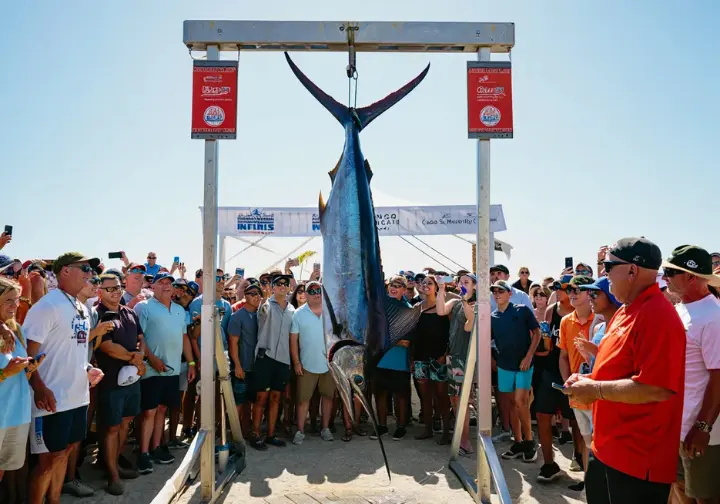
Cabo’s fishing pulse quickens significantly during its famous tournament season. These high-stakes events draw global attention and inject substantial energy and revenue into the region. Understanding this scene, alongside conservation trends and the sheer economic weight of sportfishing, provides a fuller picture of Cabo’s angling identity.
Major Fishing Tournaments
Cabo hosts several world-renowned tournaments annually, especially in the fall. Key events include the Pelagic Triple Crown (June), Bisbee’s East Cape Offshore (July/Aug), Los Cabos Billfish Tournament (Oct), Bisbee’s Los Cabos Offshore (Oct), the legendary Bisbee’s Black & Blue Marlin Tournament (Oct), and the Los Cabos Tuna Jackpot (Nov).
The Bisbee’s Black & Blue is the “Super Bowl of Sportfishing,” famous for multi-million dollar payouts. Participating requires significant investment and advance planning, as top charters book out early.
Visiting during major tournament weeks means a lively atmosphere but potentially higher prices and demand. Watching the weigh-ins can be thrilling! Many tournaments now incorporate strict release rules, reflecting a conservation focus. Check official tournament websites for current schedules and rules.
Conservation and Industry Trends
A strong catch-and-release ethic for billfish is prevalent, with circle hooks becoming standard practice. Tag-and-release programs, supported by groups like The Billfish Foundation, provide crucial scientific data.
Modern tech (GPS, sonar) enhances safety and effectiveness. Sportfishing, especially with release practices, is often seen as a sustainable economic driver compared to some commercial methods. Environmental awareness is growing, seen in community cleanup efforts.
While global stock concerns sometimes arise, local monitoring provides context. The industry actively promotes sustainability, knowing the fishery’s health is vital. You can find research discussing the link between economic benefits and relative abundance online, though access may vary.
Sportfishing Economic Significance
Sportfishing fundamentally shaped Los Cabos, transforming it into a major destination. Its economic impact is immense. Studies estimate it generates over $1.1 billion USD annually for the region through direct spending and ripple effects.
The industry supports tens of thousands of local jobs, from captains and crews to hospitality staff. It contributes significantly to tax revenues, funding public services. Fishing visitors represent a vital tourism segment, often with higher spending per trip.
License fees provide crucial funding for management, conservation, and research via agencies like FONMAR. Broader context on the industry’s value can be seen in reports from organizations like the American Sportfishing Association.
Solving Angler Pain Points
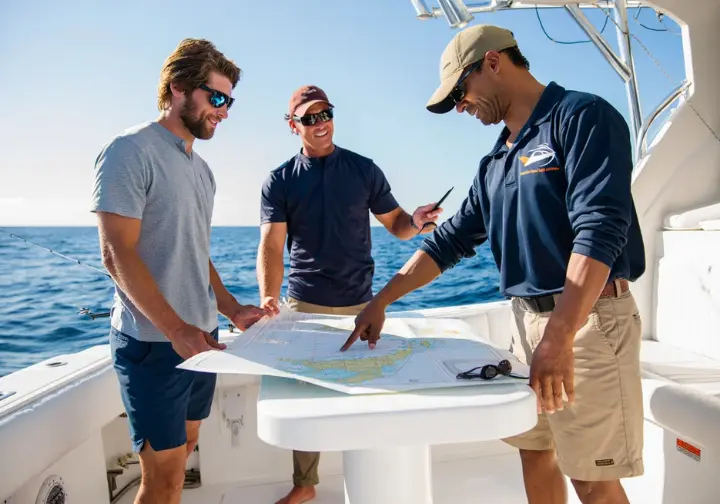
Even paradise has its potential snags. Planning a Cabo fishing trip can bring questions about costs, comfort, safety, and managing expectations. Addressing these common concerns head-on helps ensure your focus stays on the thrill of the chase, not logistical headaches. Let’s untangle some frequent angler pain points related to the Cabo fishing experience.
Cost and Booking Clarity
The “all-inclusive” label often causes confusion. Solution: Always get a detailed written quote listing all inclusions/exclusions (licenses, bait, cleaning, tips). Ask directly about customary gratuity (15-20%) to budget accurately. Confirm bait costs, as they can fluctuate ($20-$40+ extra is common).
Clarify fish cleaning fees ($10-$30+ or per pound) – it’s usually extra. Direct communication with the operator is key, even when using booking platforms. Be wary of unsolicited low-ball offers at the marina dock; stick with researched, reputable operators. Official bodies like CONAPESCA oversee charter requirements, implying standards for licensed outfits.
Comfort and Safety Onboard
Seasickness is common. Solution: Take preventative medication before departure, stay hydrated, get fresh air, focus on the horizon. The Baja sun is intense. Solution: Use high-SPF sunscreen, hats, polarized sunglasses, protective clothing. Sunburn is no fun!
Tourist areas are generally safe; use standard travel awareness. Reputable charters prioritize onboard safety. Solution: Listen to crew instructions, wear non-slip shoes, know where safety gear is. Don’t hesitate to communicate with the crew if feeling unwell or having questions. Captains monitor weather and prioritize safety. Avoid unnecessary boat switching.
Managing Fishing Expectations
Catching fish is never guaranteed, even in Cabo. Solution: Understand fishing’s variability. Trust the crew’s expertise. Focus on the overall experience – the scenery, the boat ride. A full-day fishing charter (8 hrs) generally offers more opportunity than a half-day (4-5 hrs).
Communicate your target fish species and fishing desires to the captain, but remain flexible. Adapting to conditions (e.g., targeting dorado if marlin aren’t biting) can lead to success. Review recent fishing reports to set realistic expectations based on current conditions. Remember the conservation value – releasing a magnificent game fish is a huge part of the Cabo experience.
Bringing Your Catch Home
Bringing fish home requires planning. Solution: Follow Mexican bag limits strictly. Arrange professional filleting, vacuum-sealing, and freezing (usually extra cost). Pack frozen fillets in a durable, leak-proof cooler for air travel. Check airline rules (checked baggage, dry ice restrictions).
Be aware of your home country’s import regulations. An excellent alternative is using local “you hook ’em, we cook ’em” restaurant services. Remember, filleting happens after returning to port. Confirm processing fees beforehand. Navigating international transport involves rules from both Mexico and your destination; resources discussing US/MEX regulations can provide context.
Final Tips for 2025
As you chart your course for a 2025 Cabo fishing adventure, keep these key points in mind to ensure a smooth and successful voyage for an unforgettable fishing trip:
- Plan Seasonally: Match your trip dates to peak seasons for your target fish species using calendars and reports.
- Choose Charters Wisely: Research operators, read reviews, compare boat types (fishing boats, yachts), and get written confirmation of all costs (licenses, bait, tips, cleaning). Consider Lands End Charters or Lucas Picante Sportfishing.
- Get Your License: Ensure every person onboard has a valid Mexican fishing license (sportfishingbcs.gob.mx recommended).
- Know the Rules: Understand bag limits (especially the “counts as five” rule for billfish/dorado/roosterfish) and regulations. Embrace catch-and-release.
- Prepare for Elements: Pack sunscreen, hats, polarized sunglasses, layered clothing, non-slip shoes, and seasickness remedies if needed.
- Trust Your Crew: Rely on the local knowledge and experience of your captain and crew for finding fish and ensuring safety. Communicate goals but stay flexible.
- Manage Expectations: Fishing varies. Enjoy the experience on the water, the scenery, and the thrill, regardless of the final catch count. Aim for unforgettable fishing memories.
- Budget for Extras: Factor in licenses, bait (if excluded), fish cleaning, and customary crew gratuity (15-20%).
- Consider Logistics: If bringing fish home, arrange processing and check airline/import rules.
- Book in Advance: Especially during peak seasons (summer, Oct tournaments), secure charters and lodging early. Planning a marlin fishing trip often requires booking months ahead for the best fishing charter boats.
Frequently Asked Questions
What is the absolute best month to fish in Cabo? >
Do I really need a fishing license if I’m just on the boat? >
How much should I tip the fishing crew? >
Can I easily bring my caught fish back to the US/Canada? >
We are a participant in the Amazon Services LLC Associates Program, an affiliate advertising program designed to provide a means for sites to earn advertising fees by advertising and linking to Amazon.com. As an Amazon Associate I earn from qualifying purchases. We also participate in other affiliate programs. The information provided on this website is provided for entertainment purposes only. We make no representations or warranties of any kind, expressed or implied, about the completeness, accuracy, adequacy, legality, usefulness, reliability, suitability, or availability of the information, or about anything else. Any reliance you place on the information is therefore strictly at your own risk. Additional terms are found in the terms of service.









